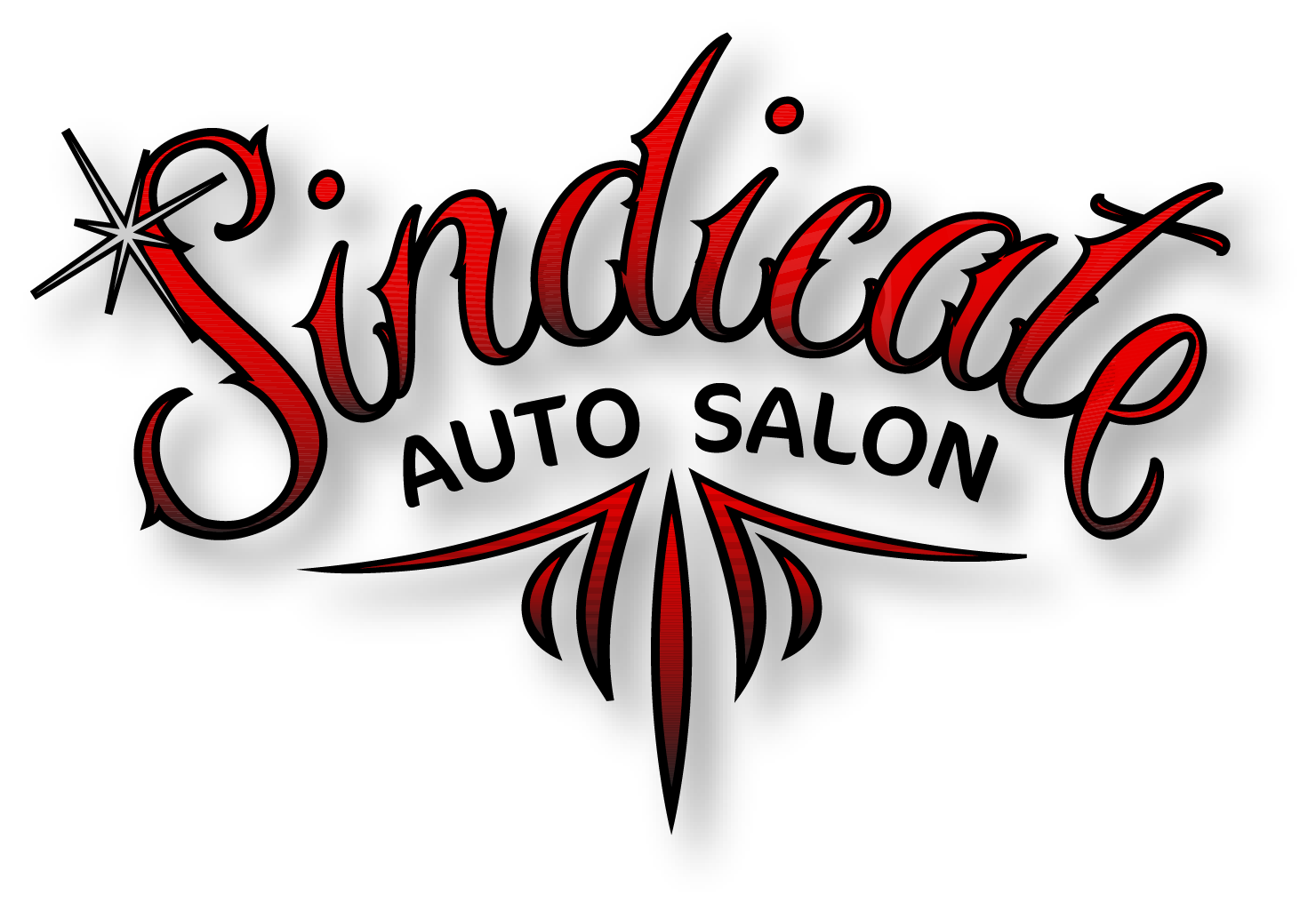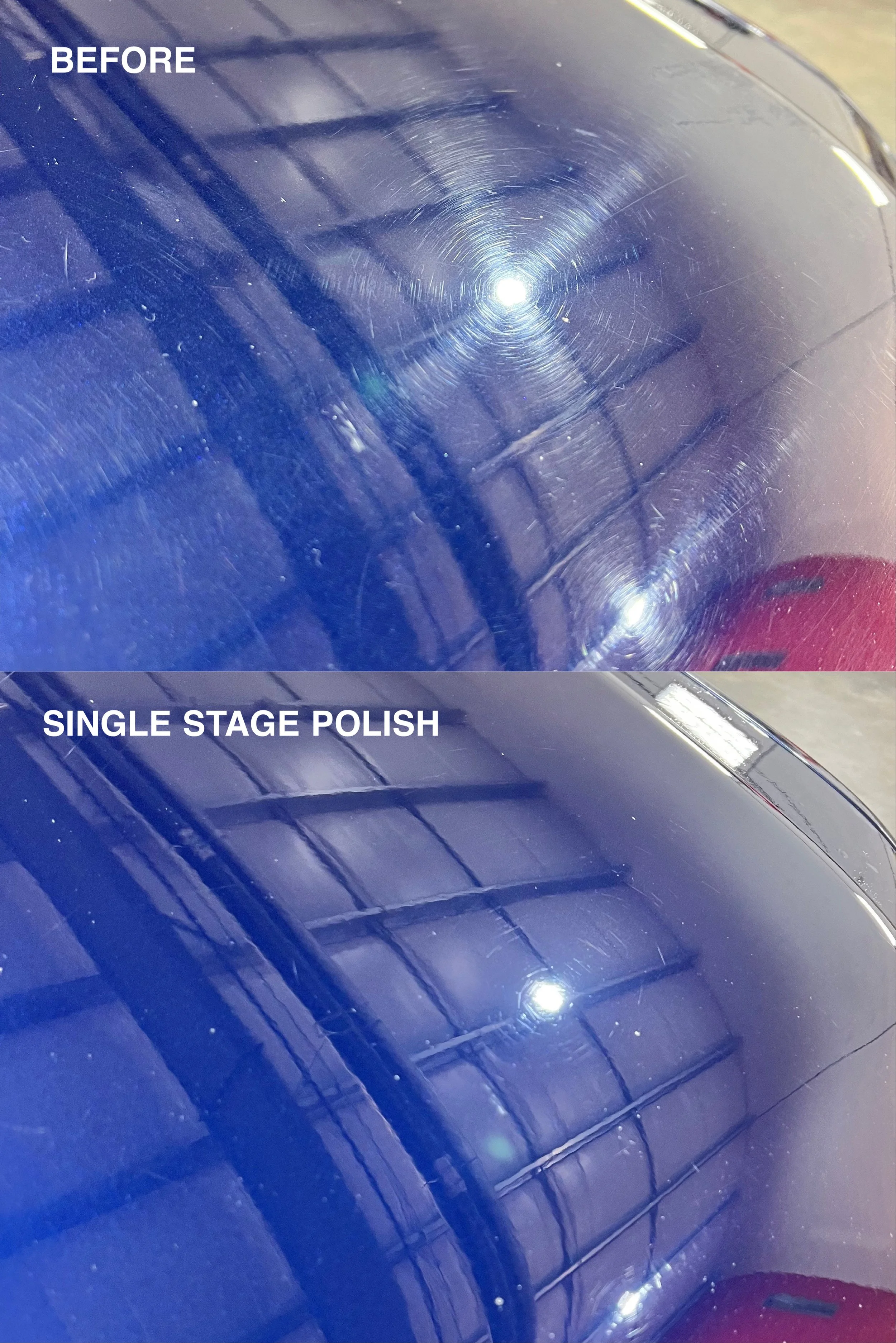Scratched, Swirled, or Dull Paint? Know These Different Polishing Methods and Decide Which is Best for Your Vehicle.
When it comes to making your car look shiny, there is Polishing and Paint Correction. The key differences between polishing and paint correction is the amount of defect removal that you will get. Polishing provides enhancement, while paint correction is fine tuned for specific defects.
While they may seem similar in nature, they are very different in both outcome and skill. Polishing will eliminate light imperfections like swirls, where paint correction is done in multiple stages to target deeper scratches within the clear coat.
We know there are many questions when you’re looking to shine up your vehicles paint. What does your vehicle “need”? Is it repairable without repaint? Is polishing and paint correction basically the same thing? Is it a bad if you aren’t 100% “correcting” your paint?
However, the most important questions is, what is repairable? And most importantly, what will YOU notice?
Let’s take a look and compare the two.
Your Individual Expectations.
Having the eye of a detailer can be a blessing and a curse. We won’t miss defects in a vehicle’s paint, but the average person is likely not going to notice every scratch or swirl.
They will, however, easily notice how shiny and glossy a vehicle is. This is why we say “most people appreciate shiny scratches” - we know that not everyone needs perfect paint. We are here to provide a service that specific to your needs, not ours.
This is where you should decide what your specific expectations are for your vehicles paint.
Let’s start with the basics — polishing.
Amplify Gloss with a Revamped Surface.
A single stage polish will remove about 60% of surface scratches and swirls. This will make an aesthetic difference with its glossy surface, as well as remove any surface decontaminates.
This is important when it comes to installing ceramic coatings and why we require, at minimum, a polish beforehand. It’s important that you’re removing defects that will otherwise get buried under the coating.
Your vehicle’s paint afterwards will be a tremendous change in the look, and dancing in the sun like it used to. The photo below is a great example of what you can achieve with just a single stage polish.
New Vehicles Benefit From a Polish.
Believe it or not, even a brand new, fresh off the lot vehicle can massively benefit from a polish. Most may assume that, being a brand new vehicle, the paint is in a perfect state and that it looks the best it can, but unfortunately that is not the case.
New vehicle’s pass through many hands until they end up with their new home, and during this time there is lots of room for error with improper washing techniques and wear and tear that happens during transport. Not to mention that factory paint is applied during mass production which doesn’t allow for as careful attention to detail.
Even if the paint does have limited defects, a polish will amplify gloss and shine and it’s much easier to achieve this while the paint has had minimal contact. At this point, we would also recommend a ceramic coating to “lock in” the revamped surface.
When Polishing Alone isn’t Enough.
The soft polishing pads and micro abrasives that are used during a polish are limited as they are not designed to attack the deeper paint defects.
This is where Paint Correction comes in, being a more extensive procedure that does target those deeper scratches and eliminating 90-95% of all paint defects, opposed to about 60% from polishing.
Of course, with the eye of a detailer, we would argue that it’s best to “perfect the surface” as much as possible prior to a coating, as everything underneath is essentially locked in afterwards. But, like we said above, we know this isn’t going to be everybodys preference.
For the client that is looking for that near perfect paint, traveling down the route of Paint Correction would be the suitable option. That being said, you do have to keep in mind that we can and will only chase after defects that are “safe” to do so, as there is a limit within your vehicle’s clear coat and you don’t want to go beyond this limit.
Prior to any correction, we measure each panels current clear coat thickness to make sure there are no concerns with this - neither you or we want to see a vehicle requiring repaint due to a burn through or premature clear coat failure.
If you’d like to read more about the Paint Correction process specifically, check out our blog post where we break everything down further.
Targeting a Single Problem Area.
With our polishing packages, we can also offer spot correction, where we dig a little deeper on a specific problem area that you bring to our attention, opposed to a full paint correction that essentially targets all problem areas.
This is a great option when you have a scratch or defect that you always seem to notice or catch, but maybe don’t notice the other defects as much.
Whether you choose to proceed with just a polish or a full paint correction, it’s very important to make sure you do your research beforehand and seek out a trusted professional.
We have spent many years perfecting our craft and we are confident in our procedures and processes. As the saying goes, good work ain’t cheap and cheap work ain’t good! Everyone that has developed and practiced these skills knows what they are worth, so if the price is too good to be true, there’s likely good reason behind that.
Here at Sindicate Auto Salon, we will always strive to give you the best results within your budget, without sacrificing quality. Just let us know your individual expectations and your desired budget, and we will put together a treatment plan designed specifically for you.
Still have questions? Get in touch with us and our professionals would be glad to help.







